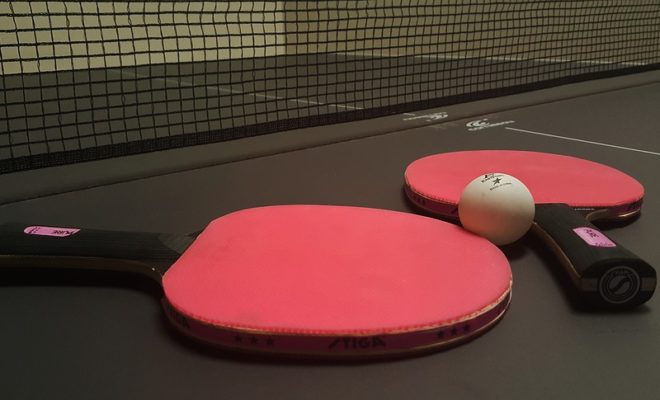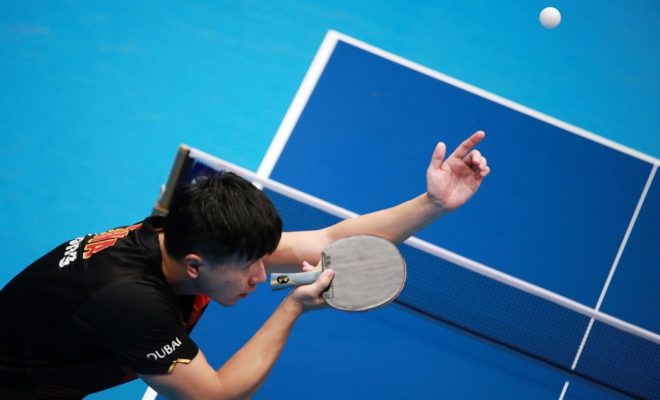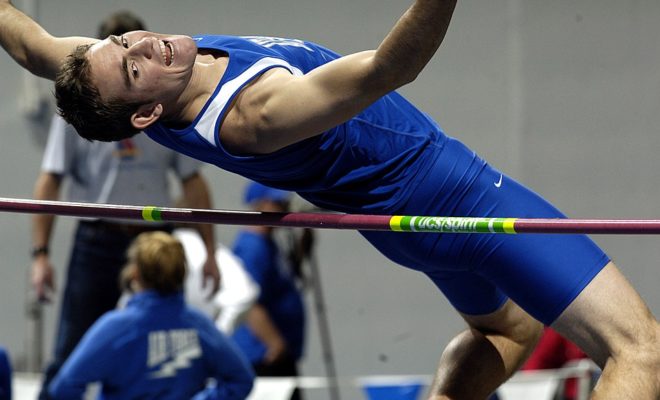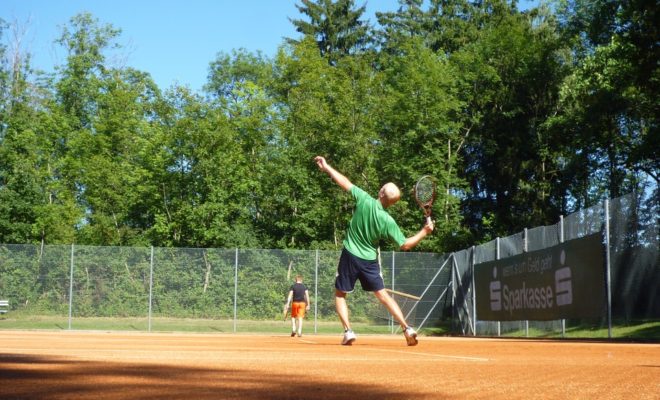THE VOLLEY AND OVERHEAD SMASH

The net assault is the overwhelming cannons of tennis. It should squash all guard. All things considered it must be viewed as a point-winning stroke at all circumstances, regardless of whether the shot is volley or crush.
Once at the net hit from the point at the main open door given to get the racquet solidly on the ball. Every one of the laws of footwork clarified for the drive are hypothetically the same in volleying. By and by you rarely have room schedule-wise to change your feet to a set position, so you forestall inconvenience by tossing the weight on the foot closest to the ball and pushing it in the shot.
Volleys are of two classes:
(1) the low volley, produced using beneath the midsection
(2) the high volley, from the midriff to the head. In contradistinction to the hitting plane order are the two styles known as (1) the profound volley and (2) the stop volley.
All low volleys are blocked. High volleys might be either blocked or hit. Volleys ought to never be stroked. There is no complete on a low volley and almost no on a high one.
You will hear much discuss “”hack”” volleys. A hack stroke is one where the racquet goes from over the line of flight of the ball, down and through it, and the point made behind the racquet is more prominent than 45 degrees, and many approach 90 degrees. In this way I say that no volleys ought to be hacked, for the inclination is to pop the roll together noticeable all around off any cleave. Cut volleys in the event that you need to, or hit them level, for both these shots are made at a little edge to the flight-line of the ball, the racquet confront voyaging nearly along its plane.
In all volleys, high or low, the wrist ought to be bolted and totally hardened. It ought to dependably be underneath the racquet head, in this way propping the racquet against the effect of the ball. Permit the compel of the approaching shot, in addition to your own particular weight, to give back the ball, and don’t endeavor to “”wrist”” it over. The tilted racquet face will give any obliged edge to the arrival by looking the ball off the strings, so no wrist turn is required.
Low volleys can never be hit hard, and inferable from the tallness of the net ought to generally be strongly calculated, to permit remove for the ascent. Any ball met at a higher plane than the highest point of the net might be hit hard. The stroke ought to be fresh, smart, and unequivocal, yet it ought to stop as it meets the ball. The finish ought to be little. Most low volleys ought to be delicate and short. Most high volleys require speed and length.
The “”stop”” volley is simply a shot blocked short. There is no compel utilized. The racquet essentially meets the approaching ball and stops it. The ball bounce back and falls of its own weight. There is little skip to such a shot, and that might be diminished by permitting the racquet to slide somewhat under the ball right now of effect, in this manner bestowing reverse-pivot to the ball.
Volleying is a science in light of the old geometric saying that a straight line is the most limited separation between two focuses. I imply that a volleyer should dependably cover the straight passing shot since it is the most brief shot with which to pass him, and he should volley straight to his opening and not squander time attempting outlandish bending volleys that give the base-liner time to recuperate. It is Johnston’s incredible straight volley that makes him such a perilous net man. He is continually “”punching”” his volley straight and hard to the opening in his rival’s court.
A net player must have ground strokes with a specific end goal to accomplish the net position. Try not to imagine that an administration and volley will suffice against top of the line tennis.
Endeavor to murder your volleys immediately, yet ought to your shot not win, take after the ball ‘cross and again cover the straight shot. Continuously constrain the man endeavoring to pass you to play the hardest conceivable shot.
Assault with your volleys. Never protect the ball when at the net. The main guarded volley is one at your feet as you come in. It is a mid-court shot. Volleys ought to win with position more than speed, in spite of the fact that speed might be utilized on a high volley.
Firmly identified with the volley, yet not the slightest bit a volley stroke, is the overhead crush. It is the Big Bertha of tennis. It is the long range fear that ought to dependably score. The tenets of footwork, position, and heading that represent the volley will suffice for the overhead. The swing alone is distinctive. The swing ought to be firmly partnered to the cut administration, the racquet and arm swinging openly from the shoulder, the wrist adaptable and the racquet giving a slight bend to the ball to hold it in court. The overhead is primarily a point champ through speed, since its ricochet is high to the point that a moderate situation regularly permits time for a recuperation.
Try not to jump noticeable all around superfluously to hit overhead balls. Keep no less than one foot, and when conceivable both feet, on the ground in crushing, as it helps in directing the weight, and gives better adjust. Hit level and conclusively to the point if craved.
Most missed overhead shots are because of the eye leaving the ball; however a menial of blunders is because of absence of certainty that gives a confined, weak swing. Finish your overhead shot to the furthest reaches of your swing.
The overhead is basically a copies shot, in light of the fact that in singles the odds of passing the net man are more noteworthy than hurling over his head, while in pairs two men cover the net so effortlessly that the most ideal approach to open the court is to throw one man back.
In crushing, the longest separation is the most secure shot since it permits a more prominent room for mistakes. In this way crush ‘cross court when squeezed, however pull your short heaves either side as dictated by the man you are playing.
Never drop a heave you can hit overhead, as it drives you back and gives the assaulting position to your rival. Never crush with an invert wind, dependably hit with a straight racquet face and direct to the opening.
Firmly associated with the overhead since it is the typical resistance to any hard crush, is the throw.
A hurl is a high hurl of the ball arrival between the administration line and the standard. A magnificent throw ought to be inside 6 feet of the benchmark.
Throws are basically cautious. The thoughts in hurling are: (1) to give yourself an opportunity to recoup position when hauled out of court by your adversary’s shot; (2) to drive back the net man and separate his assault; (3) to tire your rival; (4) periodically to, win neatly by situation. This is generally a heave volley from a nearby net rally, and is a marginally extraordinary stroke.
There is (1) the slash throw, a vigorously under-cut turn that lingers palpably. This is the best cautious heave, as it goes high and gives a lot of time to recoup position. (2) The stroke hurl or level heave, hit with a slight top turn. This is the point-winning hurl since it gives no opportunity to, the player to circled it, as it is lower and quicker than the hack. In making this heave, begin your swing like a drive, however permit the racquet to moderate up and the face to tilt upward similarly as you meet the ball. This, shot ought to from time to time go over 10 feet noticeable all around, since it has a tendency to go out with the buoy of the ball.
The hack throw, which is a chosen under cut, ought to ascend from 20 to 30 feet, or all the more, high and must dive deep. It is ideal to throw out and run your adversary back, along these lines tiring him, than to heave short and give him certainty by a simple slaughter. The estimation of a hurl is primarily one of disquieting your adversary, and its belongings are exceptionally evident on the off chance that you startlingly bring off one at the pivotal time of a match.









